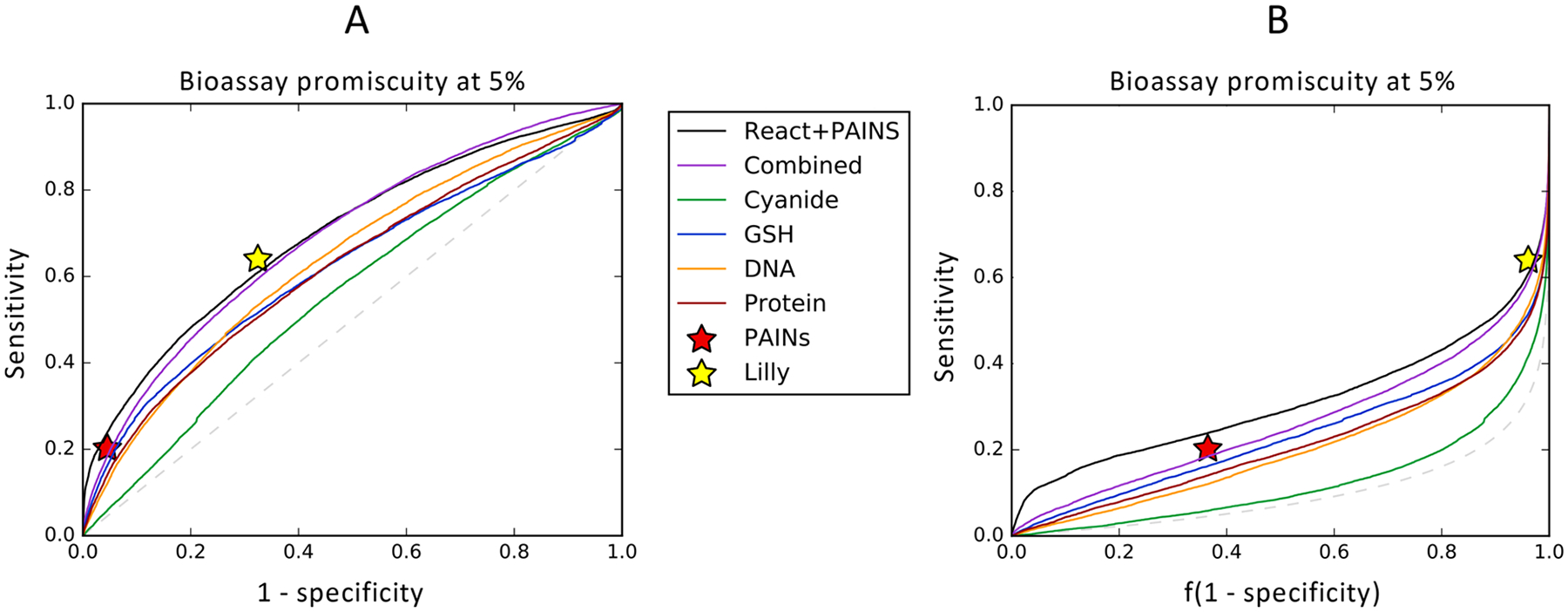Figure 5.

Reactivity scores are predictive of promiscuous bioactivity. (A) Model scores of small-molecule reactivity with DNA (AUC 63.8%), GSH (AUC 62.1%), and protein (AUC 62.1%) are all modestly predictive of promiscuous behavior at the 5% bioactivity cutoff. Predictions of GSH reactivity achieve similar sensitivity and specificity to PAINS filters, while Lilly MedChem filters have a higher sensitivity for promiscuous actives but lower specificity. Combining the four reactivity scores into a single integrated score via a small neural network achieves a 100-fold cross validated AUC of 69.1%. Including PAINS filter matches with reactivity scores in a similar manner achieves a 100-fold cross validated AUC of 69.5%. (B) CROC curves58 with the exponential transform (α = 10) show a substantial increase in early recall for the combined PAINS and reactivity model, with a 4% increase in sensitivity compared to PAINS filters at the same specificity.
